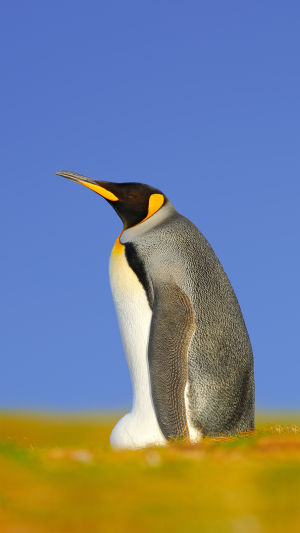Penguins, also known as the "boat of the sea," are some of the oldest wandering birds on Earth. They likely settled in Antarctica before the Earth became covered in ice.
Penguin is the common name for all species of birds in the family Penguinidae. There are 18 species of penguins worldwide, most of which live in the Southern Hemisphere.
1. Emperor Penguin
The emperor penguin is the largest species in the penguin family. They breed on the ice in the harsh Antarctic winter. Females lay one egg at a time, and males incubate the eggs. The male emperor penguin has a vascular, purple-skinned nursery pouch between his legs and the underside of his abdomen. This pouch keeps the eggs at a comfortable 36 degrees Celsius in ambient temperatures as low as -40 degrees Celsius.
2. Adelie Penguin
The Adelie penguin is a small to medium-sized species in the penguin family. Females and males are identical in shape and color, making them difficult to identify. The Adelie penguin takes its name from Adelie Land on the Antarctic continent, which was named by French explorer Dimon Dilville after his wife in 1840. Its wide distribution makes it the most common penguin in Antarctica.
3. Papua Penguin
Also known as white-browed penguins and Kintu penguins, they are large in size. They are commonly known as "gentleman penguins" because they look like gentlemen and are very cute.
4. Hooded Penguin
The most obvious feature of the hooded penguin is the black stripe at the bottom of the neck, resembling the hatband of a naval officer, making it look powerful and tough. These penguins live in the South Sandwich Islands, Antarctica, South Orkney Islands, South Shetland, South Georgia, Bouvet Island, and Palerne Islands.
5. African Penguin
These penguins live on the southwestern coast of Africa. They have a black crest and black spots on their chests, and each spotted-ringed penguin has individual spots that resemble human fingerprints.
6. Galápagos Penguin
The Galápagos Penguin is a true tropical penguin that breeds on isolated islands near the hot equator, where temperatures can reach 40°C and sea surface temperatures can reach 14-29°C. Despite the tropical environment, the Galápagos Penguin, like other penguins, seeks food and breeds in cold water.
7. Magellanic Penguin
Magellanic penguins are the largest of the temperate penguin species and are mainly found in South America off the coasts of Argentina, Chile, and the Falkland Islands, with a few migrating into Brazil. They were first discovered by the famous navigator Magellan, and later, the scientific community named them after him.
8. Humboldt Penguin
The Humboldt penguin is found in South America and named after Alexander von Humboldt, the first German naturalist to introduce the species to the Western scientific community. Compared to most penguins in the world, the Humboldt penguin prefers to live in warmer regions. Their feathers have become particularly short to adapt to the warmer climate.
9. Southern Rockhopper Penguin
Found in most parts of the Southern Hemisphere, the Rockhopper penguin often nests on loose rocks or between steep rock faces. They are the best climbers of all penguins.
10. Yellow-eyed Penguin
This penguin has a colored crest on its head or next to its eyes, with the only difference being the white spot under its eyes. A constant presence in the vast oceans between Australia and Antarctica, the yellow-eyed penguin is never short of food, and this archipelago is a very rare piece of paradise. Every summer, the waters around these isolated islands are filled with penguins. They gather together to raise the next generation.





